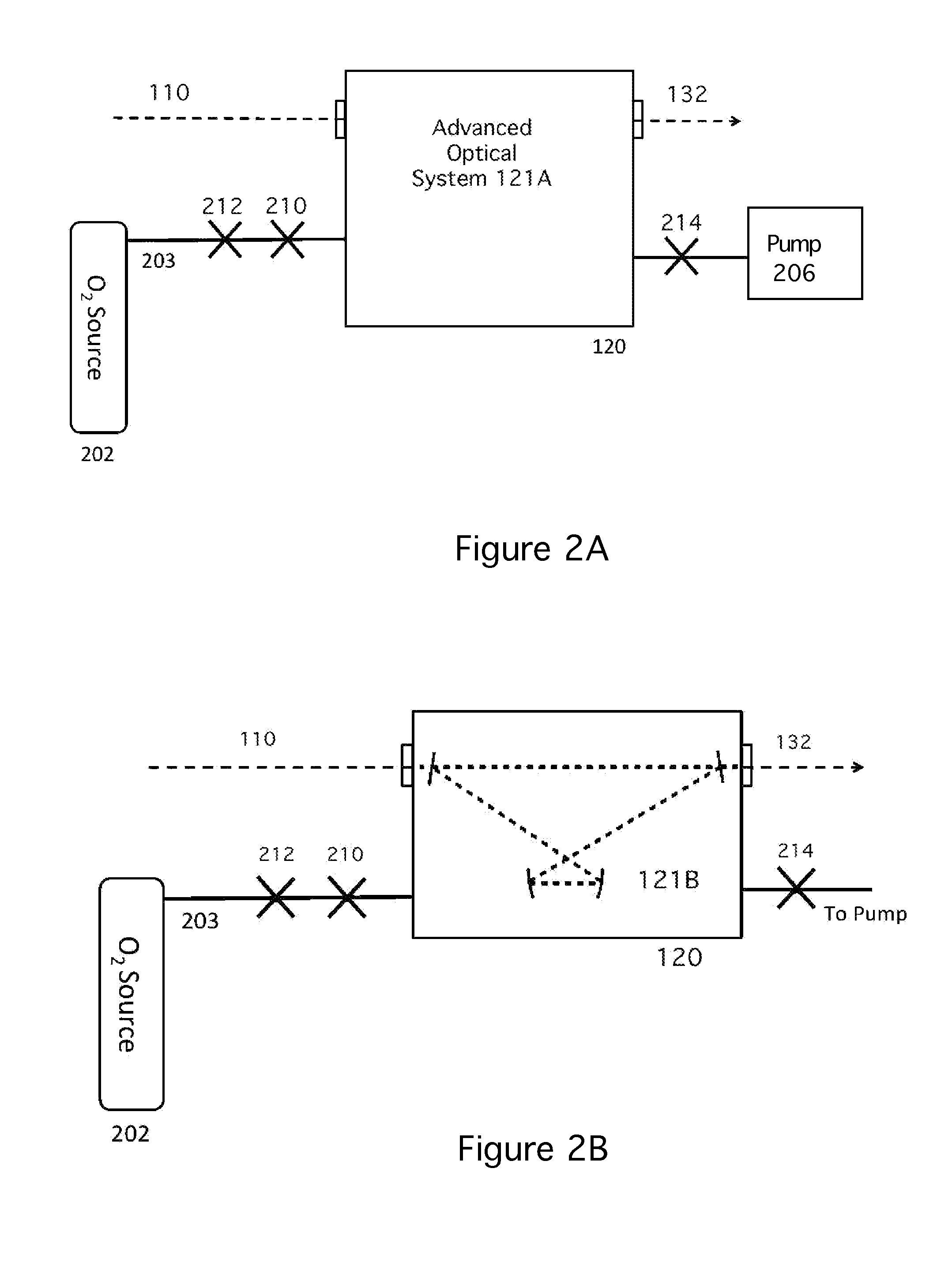Self-cleaning of optical surfaces in low-pressure reactive gas environments in advanced optical systems
- Summary
- Abstract
- Description
- Claims
- Application Information
AI Technical Summary
Benefits of technology
Problems solved by technology
Method used
Image
Examples
first embodiment
[0020]Pumping causes a vacuum to form in vacuum chamber 120. After the vacuum is created, a small amount of oxygen / or other reactive species 203 is inserted into vacuum chamber 120. In a first embodiment, valves 210 and 214 are closed and chamber 210 is sealed for some period of time while in use. The oxygen source may be disconnected from vacuum chamber 120 via connector 212, if desired. Pump 206 may also be disconnected. Generally, an input pump beam 110 is provided to the vacuum chamber 120. The optics within vacuum chamber 120 amplify pump beam 110 and provide an amplified output beam 132.
second embodiment
[0021]In a second embodiment, chamber 120 is evacuated, the oxygen backfill in inserted, and the optical system is run for a period of time. Then, chamber 120 is re-evacuated and sealed. Tests have shown that in some cases the backfilled O2 gas can be evacuated from the chamber after an extended period of operation, once all contaminants have been consumed by the backfilled gas. A period of several weeks of operation has proved to be sufficient in one test.
third embodiment
[0022]In a third embodiment, pumping is continuous, and oxygen 202 is added continuously as well, at such a rate that the desired pressure is maintained. In this case, valves 210, 214 and are not closed and may not need to be present.
[0023]The oxygen backfill of the present invention is most useful in systems wherein the power level is high enough to cause contamination, for example peak powers exceeding 100 MW for an amplifier, or over 5 mJ pulse energy for a compressor, over a spot size of 5 mm or less. A wide range of oxygen backfill pressures provides a benefit, from >10 torr down to as low as 10−4 torr. Pressures between 0.1 torr and 2 torr have proven to work especially well. In a cryogenic chamber, the initial pressure of (for example) 2 torr is reduced to around 10−2 torr because of gas condensation on the low temperature components. This still works well, because as oxygen is used up in the system, the remaining oxygen becomes available.
[0024]FIG. 2B is a block diagram simi...
PUM
 Login to View More
Login to View More Abstract
Description
Claims
Application Information
 Login to View More
Login to View More - R&D
- Intellectual Property
- Life Sciences
- Materials
- Tech Scout
- Unparalleled Data Quality
- Higher Quality Content
- 60% Fewer Hallucinations
Browse by: Latest US Patents, China's latest patents, Technical Efficacy Thesaurus, Application Domain, Technology Topic, Popular Technical Reports.
© 2025 PatSnap. All rights reserved.Legal|Privacy policy|Modern Slavery Act Transparency Statement|Sitemap|About US| Contact US: help@patsnap.com



